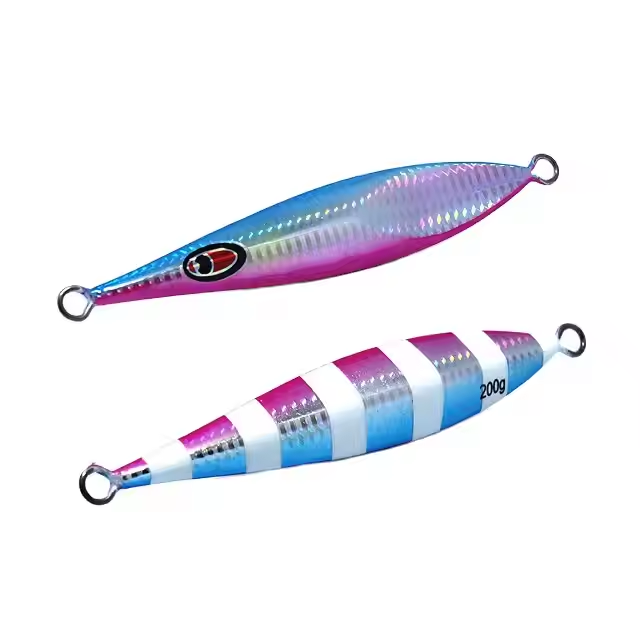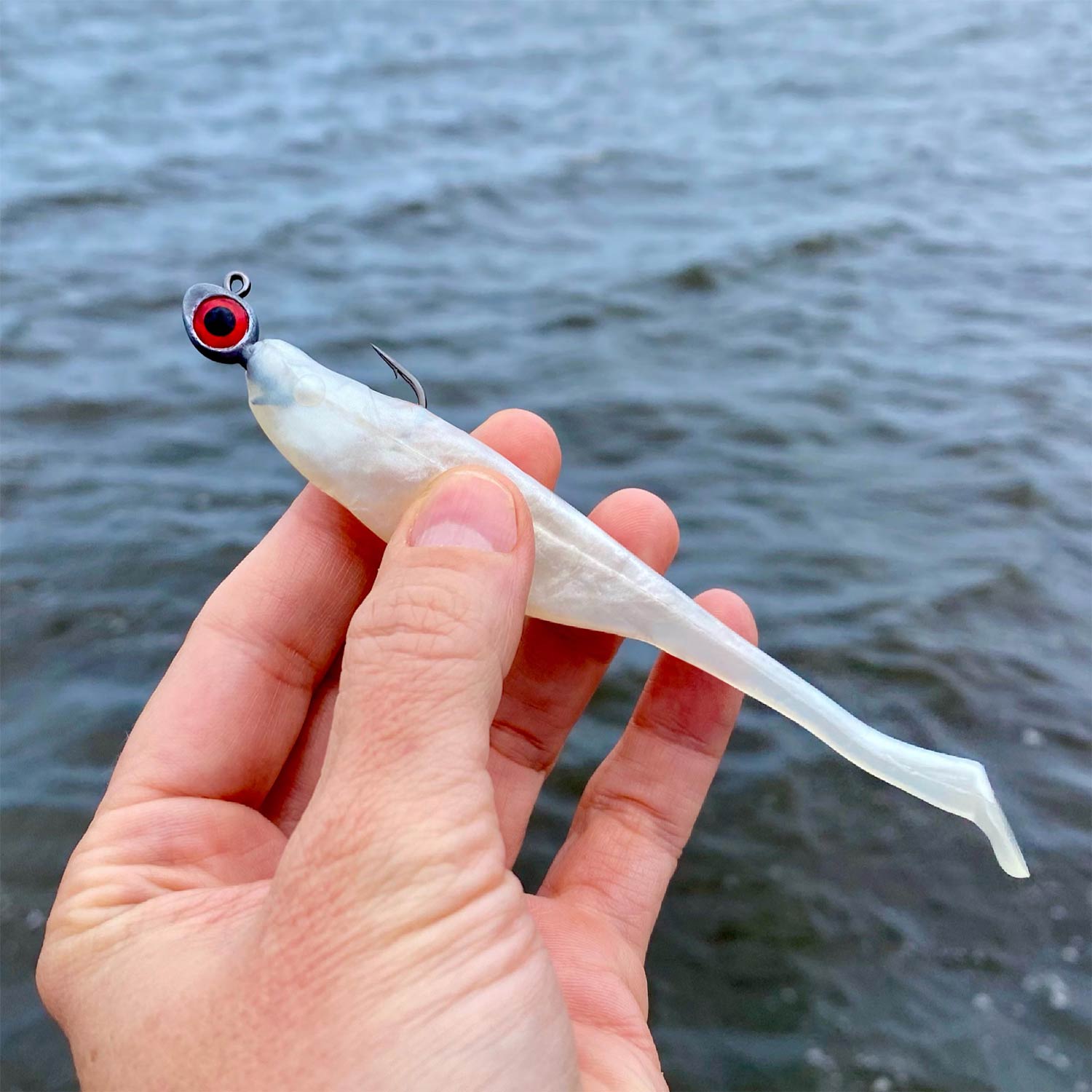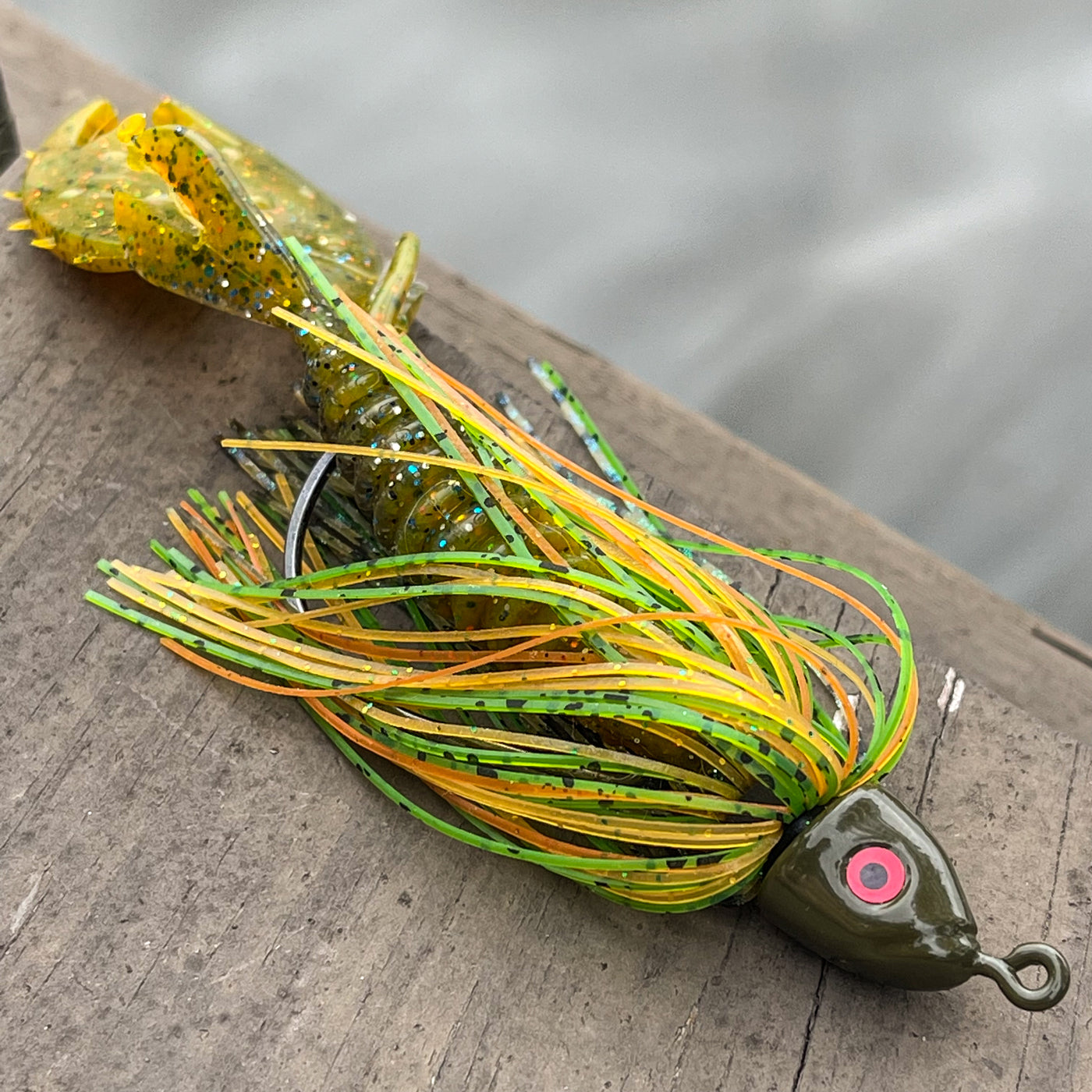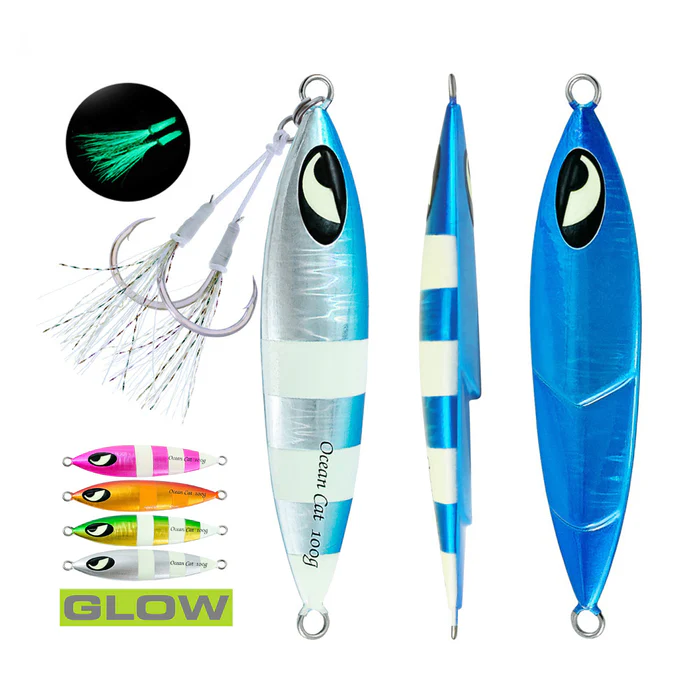Introduction to Fishing Jigs
What is a Fishing Jig?
A fishing jig is a type of fishing lure consisting of a lead sinker, hook, and a soft body to attract fish. Anglers use jigs to target a wide range of fish species, both in freshwater and saltwater environments. The versatility and effectiveness of fishing jigs make them a popular choice among anglers of all skill levels. Understanding the components and variations of fishing jigs provides insight into their functionality and appeal.
Jigs typically have a weighted head, which helps the lure sink rapidly and reach the desired depth quickly. The hook is usually molded into the lead head, creating a compact and streamlined design. The body of the jig can be made from various materials, such as soft plastic, feathers, or hair, which add movement and visual appeal to the lure. The soft body often mimics the appearance of prey, such as minnows, worms, or other small aquatic creatures, to entice fish.
The design of fishing jigs allows for various presentation techniques, making them suitable for different fishing conditions and species. Anglers can use jigs in vertical jigging, casting and retrieving, or even trolling, depending on the target fish and environment. The weighted head and compact design enable precise control and maneuverability, allowing anglers to navigate different water structures and depths effectively.
Understanding what a fishing jig is and its components highlights its versatility and effectiveness as a fishing lure. These attributes contribute to its widespread use and popularity among the angling community.
What is a Fishing Jig:Types of Fishing Jigs
Fishing jigs come in various types, each designed for specific fishing conditions and target species. Understanding the different types of fishing jigs helps anglers select the most effective lure for their fishing needs.
1.Ball Head Jigs:
Ball head jigs have a round, ball-shaped head that provides a versatile and balanced presentation. These jigs are ideal for various techniques, such as casting, jigging, and vertical fishing. The round head allows for a natural and erratic movement that attracts fish in different water conditions.
2.Football Head Jigs:
Football head jigs feature a football-shaped head that helps the lure stand upright on the bottom. This design creates a natural, crawfish-like presentation, making it effective for targeting bottom-dwelling species such as bass. The wider head also reduces the likelihood of snagging on rocky or uneven surfaces.
3.Swimbait Jigs
Swimbait jigs have a streamlined head and are typically used with soft plastic swimbait bodies. These jigs mimic the swimming action of baitfish, making them effective for open water and mid-water column fishing. Swimbait jigs are popular for targeting predatory species such as bass, walleye, and pike.
4.Finesse Jigs:
Finesse jigs are smaller and lighter than other jigs, designed for subtle and delicate presentations. These jigs are ideal for fishing in clear water or pressured environments where fish are more cautious. Finesse jigs often feature fine, flared skirts and are effective for targeting finicky fish, such as smallmouth bass.
5.Punching Jigs:
Punching jigs have a compact and heavy head, designed to penetrate dense vegetation and cover. These jigs are effective for “punching” through thick mats of grass, weeds, or lily pads to reach fish hiding beneath. Punching jigs are commonly used for targeting largemouth bass in heavy cover.
Understanding the different types of fishing jigs helps anglers select the most suitable lure for their specific fishing conditions and target species. Each type offers unique advantages and presentations, enhancing the overall fishing experience.
What is a Fishing Jig:How to Use Fishing Jigs
Techniques for Fishing with Jigs
Fishing with jigs requires specific techniques to maximize their effectiveness and attract fish. Understanding the various techniques for fishing with jigs helps anglers improve their success on the water.
1.Vertical Jigging: Vertical jigging involves dropping the jig straight down to the desired depth and using subtle movements to attract fish. This technique is effective for fishing in deep water and around structures such as rocks, drop-offs, and submerged timber. Anglers can use short, upward jerks or slow, steady lifts to create a lifelike motion that triggers strikes.
2.Casting and Retrieving: Casting and retrieving jigs is a versatile technique that allows anglers to cover a wide area of water. After casting the jig, let it sink to the desired depth before starting the retrieval. Vary the retrieve speed and incorporate pauses, twitches, and hops to mimic the movement of prey. This technique is effective for targeting fish in shallow to mid-depth waters.
4.Swimming Jigs:
Swimming jigs involves a steady retrieve, allowing the jig to swim through the water column. This technique is effective for targeting active, predatory fish that hunt for baitfish. Swimbait jigs are particularly well-suited for this technique, as their design creates a realistic swimming action that entices fish.
5.Skipping Jigs:
Skipping jigs involves casting the jig under overhanging structures, such as docks, trees, or bushes, by skipping it across the water’s surface. This technique is effective for reaching fish hiding in shaded or hard-to-reach areas. Anglers can use jigs with flat or streamlined heads for better skipping performance.
6.Flipping and Pitching:
Flipping and pitching are precise techniques used to present jigs to specific targets in close quarters. These techniques are effective for fishing around structures, such as reeds, lily pads, or brush piles. Anglers use short, accurate casts to place the jig near potential fish-holding areas, allowing for a subtle and controlled presentation.
Understanding the various techniques for fishing with jigs helps anglers adapt their approach based on the fishing conditions and target species. These techniques enhance the effectiveness of jigs and increase the likelihood of catching fish.
Selecting the Right Jig for the Conditions
Selecting the right jig for the fishing conditions is crucial for maximizing success. Factors such as water clarity, depth, cover, and target species influence the choice of jig. Understanding these factors helps anglers make informed decisions when selecting jigs.
Water Clarity: In clear water, fish are more cautious, and subtle presentations are often more effective. Finesse jigs with natural colors and fine skirts work well in clear water conditions. In murky or stained water, brighter or more contrasting colors, such as chartreuse, black, or orange, are more visible and attract fish more effectively.
Water Depth: The depth of the water influences the weight of the jig needed to reach the target zone. Heavier jigs are suitable for deep water fishing, as they sink quickly and maintain contact with the bottom. Lighter jigs are ideal for shallow water fishing, allowing for a more natural and delicate presentation.
Cover and Structure
The type of cover and structure in the fishing area affects the choice of jig. Football head jigs work well on rocky or hard-bottom surfaces, while punching jigs are ideal for penetrating dense vegetation. Ball head jigs and swimbait jigs are versatile and can be used in various cover and structure conditions.
Target Species: The target species also influence the choice of jig. For example, bass anglers often use football head jigs or swimbait jigs, while panfish anglers prefer smaller ball head jigs. Understanding the feeding habits and preferences of the target species helps select the most effective jig.
Weather and Season: Weather conditions and seasonal patterns can affect fish behavior. During colder months, fish are often less active and may prefer slower, more subtle presentations. Finesse jigs are effective during these times. In warmer months, fish are more aggressive and active, making regular jigs and swimming jigs more suitable.
Understanding how to select the right jig for the fishing conditions helps anglers optimize their approach and increase their chances of success. Considering factors such as water clarity, depth, cover, target species, and weather conditions ensures that the chosen jig is well-suited for the fishing environment.
Conclusion: The Versatility and Success of Fishing Jigs
Fishing jigs are a versatile and effective fishing lure that offers numerous advantages for anglers of all skill levels. Understanding the components, types, and techniques for using fishing jigs provides valuable insights into their functionality and appeal. The ability to customize and adapt jigs to various fishing conditions and target species enhances their effectiveness and value.
The versatility and effectiveness of fishing jigs make them a reliable choice for targeting a wide range of species in different environments. Their realistic presentation, precise control, and heightened sensitivity contribute to their success in attracting fish and triggering strikes. The accessibility and ease of use of fishing jigs make them suitable for beginners and experienced anglers, providing valuable learning opportunities and enhancing the overall fishing experience.
By incorporating fishing jigs into their tackle boxes, anglers can enjoy the benefits of a reliable and adaptable fishing lure. Understanding and mastering the use of fishing jigs allows anglers to optimize their approach and increase their chances of success on the water. The versatility, effectiveness, and accessibility of fishing jigs ensure that they remain a favored choice among the angling community, enhancing the enjoyment and success of fishing adventures.




